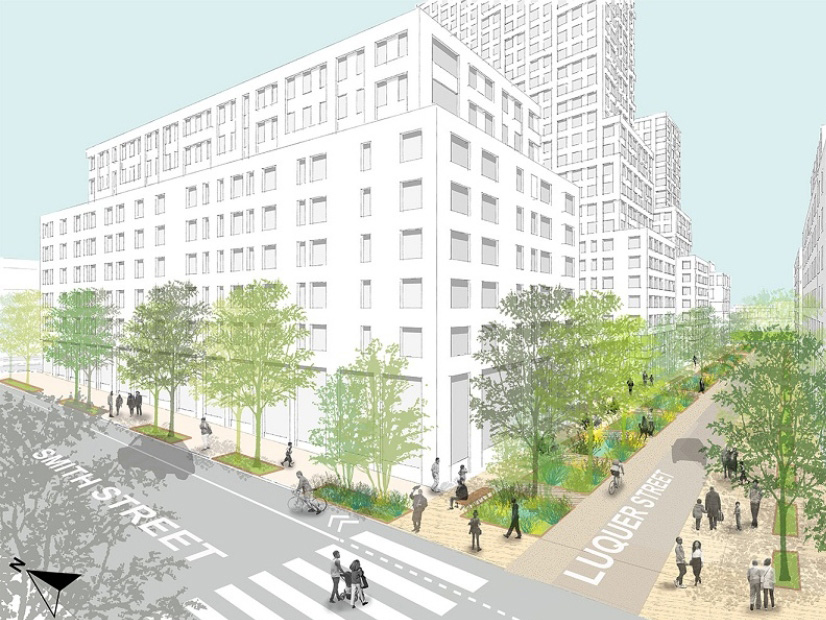
Transitioning New York’s approximately 4.5 million buildings to heat-pump technology will necessitate taking geothermal districts seriously.
“We need to accelerate the transition off of gas for heating, so we now need to move from building-by-building to block-by-block and community-by-community heat-pump installations,” said Donovan Gordon, director of clean heating and cooling at the New York State Energy Research and Development Authority (NYSERDA).
If the state tries to meet its 2050 goal for heat pumps building-by-building, it would have to complete at least 400 installations per day for 30 years, Gordon said at a webinar hosted by the New York Geothermal Energy Organization. “We don’t have the capacity to do that.”
As part of the state’s decarbonization pathway, half of all heating system sales must be heat pumps by 2030, and the technology must account for substantially all sales by 2050.
“We need to have ways to scale and do multiple installs of heat pumps to achieve these goals,” Gordon said.
To that end, NYSERDA launched a $15 million program earlier this year to advance the study and understanding of community-style heat-pump systems that operate through a distribution network, also known as a geothermal district.
In July, 23 project proposals won a total of $4 million under that program. Only one of the proposals is a demonstration project, and 21 are scoping studies. Another proposal is for a best-practices guidebook.
The winning proposals, Gordon said, address a handful of strategies that NYSERDA hopes to come from the two-year program, including cost reduction and resource diversity.
“Each proposer needs to demonstrate that doing the community-style approach is cheaper and more efficient than the building-by-building approach,” he said. “We’re not saying this is applicable to every situation.”
The proposals, he added, also need to explore and develop various sources of thermal energy, such as wastewater or condensate from steam thermal plants.
The long-term vision, Gordon said, is to demonstrate that community geothermal, renewables, battery and thermal storage can all come together to form a clean energy district.
NYSERDA is accepting applications through Aug. 17 for its third round of funding under the community heat-pump program.
Scoping Studies
The 21 scoping studies awarded in round 1 have various target dates for the release of their results, which will be available on the NYSERDA website, according to Dana Levy, senior adviser for clean heating and cooling. The average length of the studies is about half a year.
Results for the study of a planned 1,000-unit affordable housing project in Brooklyn will be available in October. The project is sited on one city block, but it has a public right of way that splits the block into two land parcels.
A unique feature of the study, Levy said, is that it will examine whether it makes sense to serve the buildings with one large district and navigate the permitting process for placing a private hot-water pipe across the right of way. Alternatively, the builder would create two main districts that serve subsets of the property.
Another study at Syracuse University “typifies some of the private campus opportunities for geothermal districts,” Levy said. The study, which will be available publicly in February, will examine eight of the campus buildings for their potential to make a geothermal district.
“This cluster has an interesting combination of loads,” Levy said. “They have a data center, an ice rink, restaurants and some apartments, so this will be a very interesting study of the load flattening that can come out of this sort of mix and match of building loads.”
The city of Syracuse will provide an opportunity to study how cities can tap into wastewater as a thermal source. The Onondaga County wastewater facility discharges about 62 million gallons of 45- to 75-degree water daily, according to the proposal. Those temperatures are comparable to the average ground temperatures that ground-source heat pumps access.
“It’s a huge thermal resource … so they’re going to look at about three dozen buildings in downtown Syracuse and see the best way to bridge the distance between that cluster of buildings and the sewage treatment plant, which is about 2 miles away,” Levy said. Results are expected in November.


